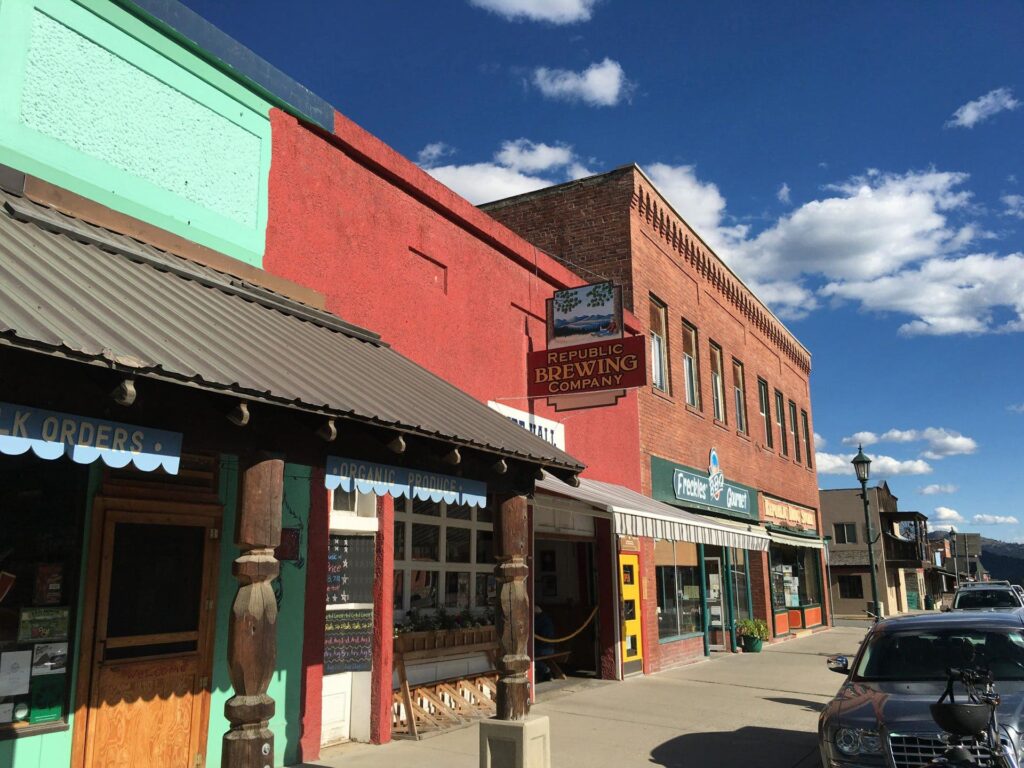Sherman Pass Scenic Byway
Don’t be fooled by this northeast Washington State byway’s short length—it’s long on natural beauty and fascinating history. Step off the road and the din of modern life becomes muted by ebullient waterfalls and vast forests of pine, larch and fir. Dig for fossils, live on a houseboat for a weekend or enjoy the simple pleasure of walking alone in the forests of the Kettle Mountain Range. You’ll also discover a historic camp built by Roosevelt’s CCC (Civilian Conservation Corps) and a log flume once used to float timber down to the foothills for transport to market.
The Sherman Pass-Crystal Falls Scenic Byway begins near the town of Republic on SR-20 and runs east across Sherman Pass—Washington’s highest maintained pass at 5,575-feet—through Colville National Forest to the town of Kettle Falls on Lake Roosevelt and continues to Colville, the Pend Oreille Wildlife Refuge and Crystal Falls.
This is a historic route used by Native Americans on their way to fish and by wagon trains, the byway is named for Civil War general William T. Sherman, who passed through in 1883. The path was paved in the 1950s and continues to serve as the area’s primary year-round east-west connector.
Key points of interest:
- Log Flume Heritage Site – The Log Flume Heritage Site where remnants of the old log flume still stand and a trail leads down to Sherman Creek. The Sherman Creek Campground sits nearby. The site provides a snapshot of logging history with several interpretive displays along a minle-long,winding, wheelchair-accessible trails.
- Republic, Wa – With its deep blue skies, scenic mountains, and friendly folks, Republic provides travelers with an attractive and convenient starting point to discover Ferry County.
North Pend Oreille Scenic Byway
This drive through Colville National Forest is a favorite of outdoor adventurers, wildlife enthusiasts and visitors curious about the area’s natural and human history. Tour a hydro-electric dam, experience the largest big-game population in the lower 48 states, visit a town that was a Kevin Costner movie set and spelunk in a former bootlegger’s cave. Watch the Kalispel tribe’s buffalo herd graze lazily in the noonday sun and see a 4,000 camas oven in Newport.
Key points of interest:
- Gardner Cave at Crawford State Park – Pend Oreille County-settler Edward E. Gardner lends his name to Gardner Cave as its apparent discoverer circa 1900, although there are other discovery claims. Gardner Cave was reportedly found during a hunting foray by the homesteader, farmer, placer miner, future Metaline saloon keeper and alleged bootlegger during Prohibition. Edward Gardner homesteaded adjacent land on the Pend Oreille River, but never owned the cave.
- Boundary Dam – The Boundary Hydroelectric Project, located on the Pend Oreille River in Northeastern Washington, supplies almost half of Seattle City Light’s power. Discover the Boundary Hydroelectric Project nestled in the foothills of the Selkirk Mountains and positioned along the banks of the scenic Pend Oreille (pronounced “pond-ah-ray”) River.
International Selkirk Loop
Discover awesome beauty at every turn of the International Selkirk Loop, a 450 km / 280-mile scenic drive encircling the spectacular Selkirk Mountains of Washington, Idaho and British Columbia. Play on crystal clear rivers and lakes, amid snow-capped peaks and abundant wildlife. Find charming towns filled with fascinating history and things to do. Travel quiet byways with car, bike or motorcycle. Welcome to North America’s only multi-national scenic drive!
Key points of interest:
- Box Canyon Dam – The Box Canyon Hydroelectric Project was completed in 1956 and today provides its customers with clean and reliable energy. It is located on a narrow portion of the Pend Oreille River and tours begin at the visitor center. In addition the site also provides camping, swimming and an excellent spot for a picnic.
- Little Pend Oreille Wildlife Refuge – The refuge is the only mountainous, mixed-conifer forest refuge in the National Wildlife Refuge system. Take the auto tour route through the refuge for great viewing opportunities of more than 200 nesting and foraging migratory bird species, 58 mammal species and 14 reptile and amphibian species on over 40,000 acres.

